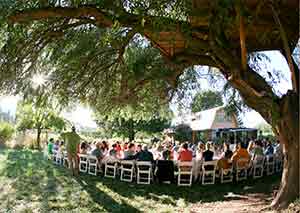The USDA Economic Research Service has released a new report (pdf) detailing for the first time the annual economic value of the local food economy on a national scale. Derived from the latest 2008 Agricultural Resource Management Survey (ARMS), their findings come as somewhat of a surprise. The annual revenue generated from local food sales was 4.8 billion dollars in 2008, a whopping 4 times greater than previous estimates.
What’s interesting about this report is that the definition for what constitutes “local” food, is only a rough consideration, defined as somewhere around a 400 mile radius between the food source, and the eater. Sales data was compiled for both direct sales from farmers to eaters (farmer’s markets, CSA’s, roadside stands, etc.), and “intermediated” channels such as farmers selling directly to restaurants, area grocery stores, and regional distributors. This later group of intermediated channels accounts for more than 50% of the total revenues generated from the entire local food economy, and had not been counted before.
Still, as the report details, this 4.8 billion figure represents about 1.9% of total farm sales in 2008. As the author’s note, “For local foods production to continue to grow, marketing channels and supply chain infrastructure must deepen.” The stated purpose of this report is to deepen the understanding about existing local food marketing channels so that both private and public sectors of society may provide added support to the local food sector of the economy.
Perhaps, too small at the present moment to change the overall local food economy revenue figures, there is an additional method of enhancing the local food economy of a region. While still in a state of relative infancy (I believe the first of these events began in 1999 by an organization called Outstanding in the Field)—there are a number of farm to table style outdoor culinary gatherings that have been springing up across the country.
One organization that notably comes to mind in this respect is Portland, Oregon based Farm to Fork that similarly brings eaters together with farmers, and winemakers, to celebrate fresh food sourced from the native farm and ranch environments where each event takes place.
Co-founders Matthew Domingo, and his wife Erin Dougherty help to inject money into the local food economy by paying small farmers (and winemakers) for the food they provide at these culinary events. At each farm dinner, the host provides a general tour of their farm, and along with additional stories and information shared over the duration of the 5-course meal (feast), also encourage donations for worthy organizations.
One of the central purposes for Farm To Fork is to help raise public awareness toward important sustainable food issues that include: increasing access to good food, improving the farm bill legislation, and promoting farm to school programs, among other good causes. At the event I attended, money was raised to help those in need obtain matching funds toward their WIC coupons (food stamps) to effectively double their WIC purchasing power at the local farmer’s market.
Disclosure: CUPS has been an invited guest to two of these events.
This post was written by Fred Gerendasy, a contributor to Cooking Up a Story as a writer and occasional interviewer. His current work is featured at Fred Gerendasy Photography.


